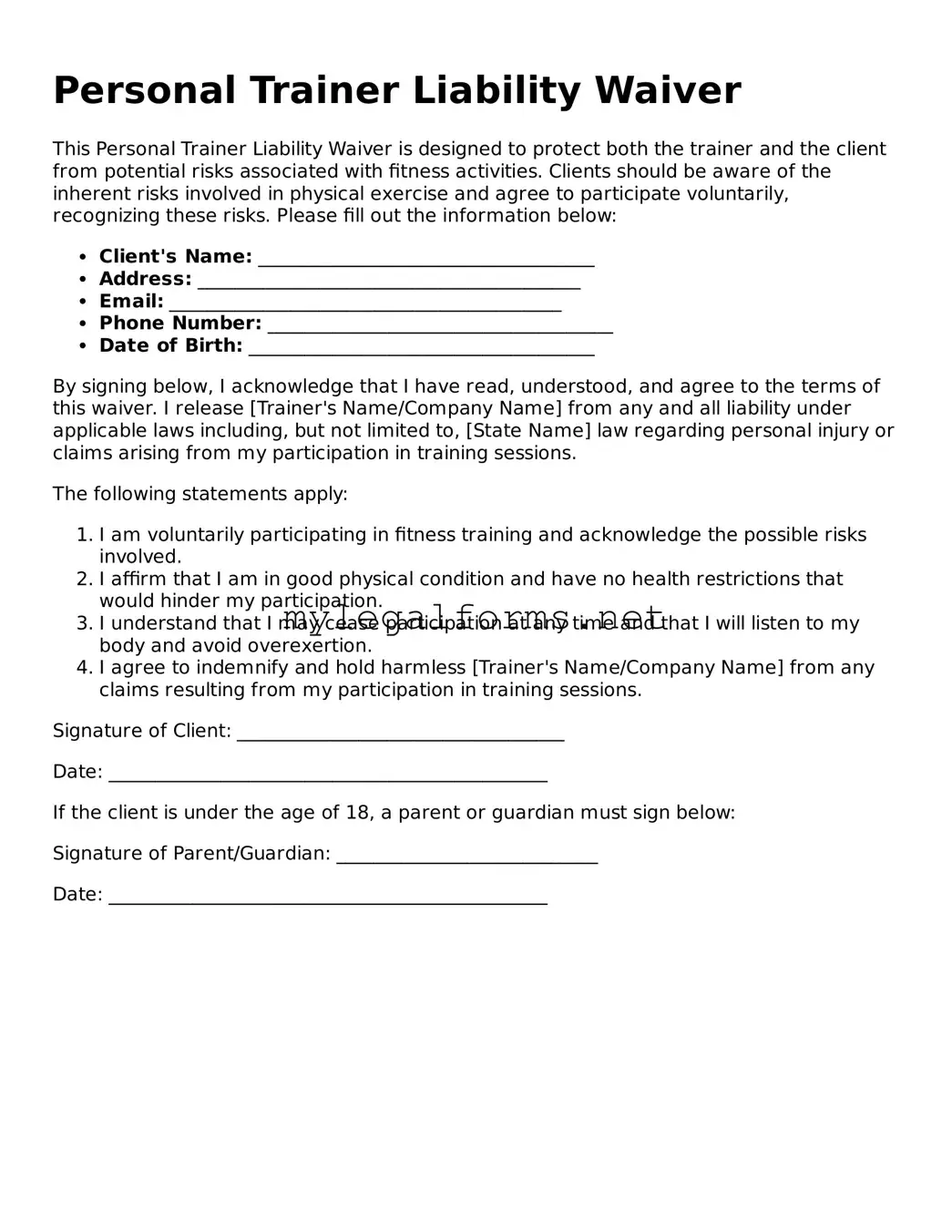Filling out a Personal Trainer Liability Waiver form is a crucial step for anyone engaging in fitness training. However, many individuals make common mistakes that can compromise the effectiveness of the waiver. Understanding these pitfalls can help ensure that the waiver serves its intended purpose.
One frequent mistake is failing to read the entire document. Many people skim through the waiver, assuming they understand its implications. This can lead to misunderstandings about the rights they are signing away. It is essential to take the time to read and comprehend every section of the waiver.
Another common error is not providing accurate personal information. When individuals fill out their names, addresses, or emergency contact details incorrectly, it can create complications in case of an incident. Ensuring that all information is correct and up-to-date is vital.
Some individuals neglect to disclose relevant medical conditions. If a person has a pre-existing condition that could affect their training, failing to mention it can lead to severe consequences. Trainers need this information to tailor workouts safely.
Additionally, people often overlook the date on the waiver. This detail may seem minor, but it is important for record-keeping and legal purposes. A waiver without a date could be considered invalid, making it essential to include this information.
Signing the form without a witness is another mistake. Some facilities require a witness signature to validate the waiver. Not adhering to this requirement can render the waiver ineffective, so it’s important to check the facility's policies.
Furthermore, individuals sometimes fail to ask questions about the waiver. If there are terms or clauses that are unclear, seeking clarification is crucial. Ignoring uncertainties can lead to unintended legal consequences.
People also often neglect to keep a copy of the signed waiver. After signing, it is wise to request a copy for personal records. Having a copy can be beneficial in case any disputes arise in the future.
Another mistake is not understanding the scope of the waiver. Some individuals may believe that signing the waiver absolves the trainer of all liability, which is not always the case. It is important to understand what the waiver covers and what it does not.
Lastly, individuals may sign the waiver under pressure. Whether due to time constraints or the trainer’s insistence, feeling rushed can lead to hasty decisions. Taking the time to consider the waiver fully is always advisable.
